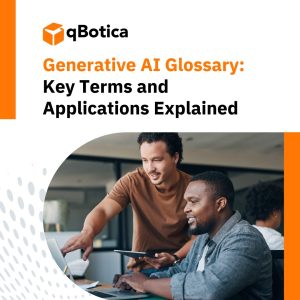Automation is the new oil, and over the last decade, it has disrupted the global supply chains by improving output. The impact of artificial intelligence and automation has considerably enhanced efficiency in the private sector. In recent times, governments around the world are beginning to look for ways to deploy this advanced technology in public administration.
Policymakers see a future in artificial intelligence and believe it can have as much of an impact on public services as it has had on the private sector. Here we discuss the buzz created by AI and automation in private and public sectors, and what this means for the future of governance and public services.
Improved Budgeting
Governments draw up budgets for the next year in the current year by factoring needs and expected revenue. Planning for future expenditures requires a proper budgeting structure that accounts for the challenges of the times. We have seen how AI has helped improve the budgeting procedures of business finance, and gradually, the government is following suit.
Forecasting future needs can be done by analyzing trends, and who can do this better than AI? With ample information, decision-makers can allocate resources equitably year in and year out for better outcomes.
There are reports of public accountants relying on generative AI to analyze expenditure records of education, infrastructural investment, and other public service investment to determine impact. AI is also used to analyze future requirements of the population before demand spikes. As more decision-makers turn to AI, each sector will receive funding based on needs, and society will be better for it.
Improved Performance
One of the major criticisms levied against government agencies is inefficiency. Many agencies are immune from competition and get constant funding from the treasury, so they are never under pressure to innovate and improve output. This leads to substandard service delivery, and the public is worse off.
This trend led to the popularization of privatization of public agencies, albeit with mixed results.
With the emergence of AI, this is set to change as more agencies turn to automation for improved output. Government organizations that provide services to members of the public can do better if they leverage automation.
For instance, AI can provide instant answers to questions, direct users to the right department, calculate fees for services required within seconds, and so much more. Suffice it to say that faster response, speedy service delivery, and much more, will improve the performance of many government agencies and ministries. Consequently, citizens will experience an improvement in living standards.
Fraud Detection
Utilizing this technology has many merits, and the signs are clear for all to see. The use of sound data analysis to spot suspicious activities or transaction anomalies by businesses is well documented, and the government can follow suit. Machine Learning algorithms have also effectively scrutinized data and executed tasks better than humans.
Institutions responsible for distributing social benefits to millions will have difficulty tracking payments manually, and the possibility of double payments to the same person is quite high. Automation can be used to flag suspicious transactions and other fraudulent schemes, which will help the government save taxpayers money.
Streamlined Management Process
Who says the management of government institutions has to be opaque and cumbersome? Automation helps civil servants do more in less time, and more efficiently.
They can analyze vast catchments of data, scan and save thousands of documents, send out notifications and documents, and flag inconsistencies. Even in the area of contract allocation, bids can be effectively analyzed using artificial intelligence to identify the contractor with the best bid that guarantees a return on investment.
Previous projects executed by bidders may also be thoroughly reviewed using key indicators to determine the level of implementation and the associated impact, including meeting compliance requirements.
Better Decision Making
Like businesses, the government is always making one decision or the other regarding different situations, and these decisions have varying impacts on the citizenry. Better decision-making leads to better outcomes, and we are beginning to see the mass deployment of prediction analysis in the public sector. Combining the information gleaned from current trends and historical data can go a long way in helping with policy decisions.
Relying on experience and intuition has been hits and misses with mixed outcomes, but with data, the right course of action is spread out for decision-makers. For instance, AI was widely deployed by health ministries and parastatals during the last COVID-19 pandemic.
Health officials used data to track vaccination rates, locations with the highest vulnerability, and the impact of vaccines on the population. The real-time data generated by AI proved to be very helpful in allocating resources and modifying health policies to reflect current realities. More agencies will turn to AI heading into the future to guide policy decisions.
Enforcement
Society can only operate effectively if stakeholders (citizens and businesses) adhere to the rules-based system. While humans should continue to draw up the rules of engagement on how we operate as a society, relying solely on human effort to enforce compliance has proven ineffective.
Many public corporations, especially in developing countries, go as far as to contract third parties to enforce laws, which leads to red tape and financial corruption.
The good news is that AI can combat this social ill by tracking businesses and individuals that fail to comply with set standards. It can be used to track violators and initiate sanctions to punish them and enforce compliance.
We see this at play in cities where automation controls traffic and punishes violators by tracking their activities and location and documenting their details for immediate or future sanctions.
City Planning
Futuristic cities are being devised and developed, and artificial intelligence and automation will be at the forefront of making them happen. Urban planning and development for the future will rely on sustainable energy and designs more than ever. Public work agencies can use AI to stimulate different scenarios to arrive at the best designs for future cities. While humans will take weeks, months, or years to simulate these scenarios, AI can do it in hours.
The future of town planning and infrastructure development will rely heavily on AI for transport, energy, and land optimization, among many other domains.
Conclusion
AI and automation are the future, and the government is encouraged to adopt advanced technology for decision-making, resource allocation, and more. Are you a public official or individual investor looking to improve outcomes with advanced technology? Look no further than qBotica for artificial intelligence technology you can trust. Our top-tier service can streamline management decisions by placing all the data you need at your fingertips so that you can make the best decisions.
Contact us today to learn more.




